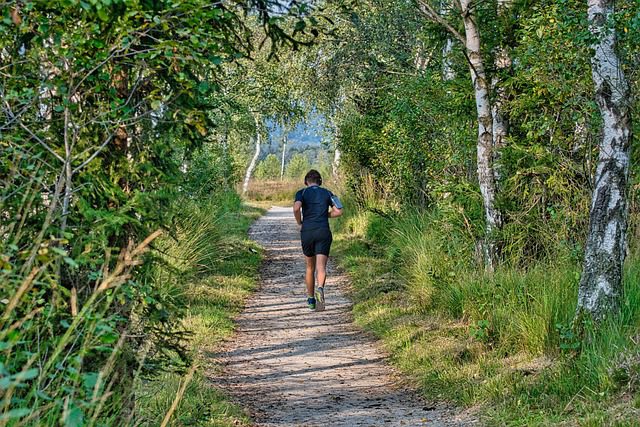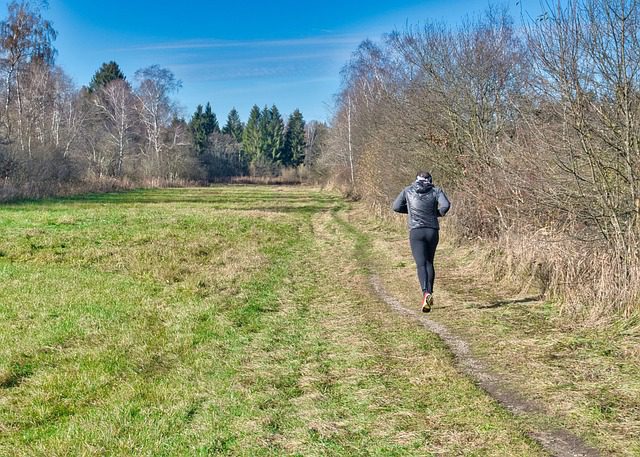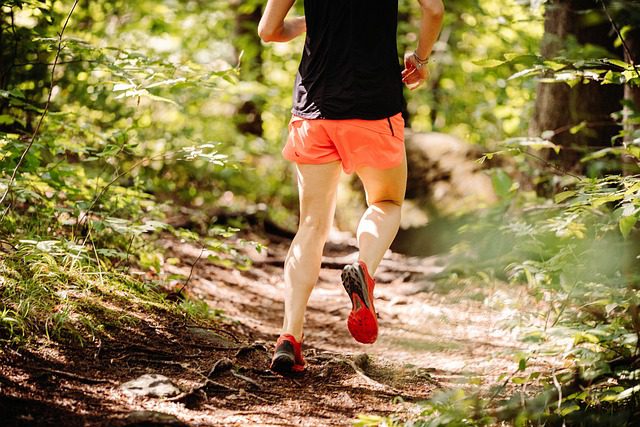Exploring Nature’s Playground: A Guide to Trail Running
Embark on an exhilarating journey through untamed landscapes, where every step leads to breathtaking views, invigorating challenges, and a profound connection with nature. Welcome to the world of trail running, a thrilling and soul-stirring pursuit that transcends mere exercise.
Imagine trading the monotonous pavement for winding forest paths, conquering rugged terrains, and immersing yourself in the serenity of the untouched wilderness. Whether you’re a seasoned runner seeking a new adventure or a curious beginner ready to explore uncharted trails, this article is your gateway to discovering the transformative world of trail running.
Lace-up your shoes, breathe in the crisp air, and prepare to embark on a remarkable journey that will elevate your fitness level, rejuvenate your spirit, and unveil the hidden wonders of nature. Here’s everything you need to know about trail running for a beginner!
Table of contents
Disclaimer: It is recommended that you speak with your doctor before you start engaging in any exercise program.

What is Trail Running?
Trail running is a type of running or jogging that takes place on natural paths, trails, or unpaved surfaces, usually through natural environments such as forests, mountains, or countryside. It involves navigating uneven terrain, varying elevations, and obstacles like rocks, tree roots, and streams.
Related Article: Intro to Rucking — Everything You Need to Know to Get Started
When it comes to trail running, it is often preferred by individuals who enjoy the challenge of running in a more adventurous and scenic setting compared to traditional road running, which can become quite dull and boring. It offers a connection with nature, a chance to explore new landscapes, and an opportunity to escape the hustle and bustle of urban environments.

Engaging in trail running can vary in difficulty, ranging from easy, well-groomed paths to technical and challenging routes that require endurance and agility. It can be pursued both as a recreational activity and as a competitive sport in organized trail races and ultramarathons.
What are the Benefits of Trail Running?
Trail running offers numerous benefits, both physical and mental. Below are some of the key benefits to hitting the trails for a run:
1. Increased strength and endurance
Trail running engages a broader range of muscles compared to road running. The uneven terrain, inclines, and descents require more stability and balance, leading to improved strength in the core, legs, glutes, feet, and ankles. The varied nature of the trails also challenges your cardiovascular system, potentially leading to increased endurance.
2. Joint-friendly and reduced impact
Trail running surfaces like dirt, grass, and trails are generally softer and more forgiving than asphalt or concrete. This results in less impact on your joints, reducing the risk of overuse injuries often associated with road running.
3. Mental well-being
Trail running provides a connection with nature and an escape from urban environments, which can positively impact your mental health. Being surrounded by natural beauty, fresh air, and tranquility can reduce stress, improve mood, and enhance overall mental clarity and focus.
4. Enhanced balance and coordination
Negotiating uneven terrain and obstacles during trail running challenges your balance and coordination. Over time, this can improve your proprioception and stability, which can benefit your overall athletic performance and help prevent injuries.
5. Variety and adventure
Trail running offers a diverse and ever-changing landscape, providing a sense of adventure and exploration. Discovering new trails, experiencing different terrains, and taking in breathtaking views can make every run a unique and exciting experience.
6. Increased mindfulness
Trail running often requires heightened focus and concentration to navigate the trails safely. This can promote mindfulness as you become more attuned to your surroundings, terrain, and body. It offers an opportunity to disconnect from technology and be fully present in the moment (something we should all do).
7. Community and camaraderie
Trail running has a vibrant and supportive community. Participating in trail races, joining local running groups, or connecting with fellow trail runners can foster a sense of camaraderie, motivation, and shared experiences.
Remember to start gradually if you’re new to trail running and always prioritize safety by wearing appropriate footwear, carrying essential supplies, and being mindful of potential hazards on the trails.
What Should Your Wear When Trail Running?
When it comes to trail running, wearing the right gear can enhance your comfort, performance, and safety. Below is a guide on what to wear:
1. Trail Running Shoes
Invest in a pair of trail running shoes specifically designed for off-road terrain. These shoes provide better traction, stability, and protection compared to regular running shoes. Look for shoes with a lugged outsole for grip, a durable upper for protection against rocks and debris, and ample cushioning for shock absorption.
2. Moisture-Wicking Clothing
Opt for moisture-wicking, breathable fabrics to keep you dry and comfortable during your run. Avoid cotton, as it retains moisture and can lead to chafing and discomfort. Choose lightweight, quick-drying materials that help regulate your body temperature.
3. Technical Socks
An often overlooked aspect of trail running is your choice of socks. Wear moisture-wicking, cushioned socks designed for running. Look for socks with features such as arch support and padding in high-impact areas to minimize the risk of blisters and provide additional comfort.
4. Compression Gear (Optional)
Some trail runners find compression socks, sleeves, or tights beneficial for improved circulation, muscle support, and reduced muscle fatigue. These garments can also offer a layer of protection against scratches and scrapes from bushes or branches.
5. Layering
Trail running often involves varying weather conditions and temperatures, especially in mountainous or forested areas. Dress in layers, allowing you to adapt to changes in weather and temperature. A moisture-wicking base layer, a lightweight mid-layer, and a windproof or waterproof outer shell can be a versatile combination.
6. Hat and Sunglasses
Protect your face and eyes from the sun, wind, and trail debris by wearing a lightweight, breathable hat and sunglasses with UV protection.
7. GPS Watch or Trail Running App
Consider using a GPS watch or a trail running app on your smartphone (or watch) to track your distance, pace, and elevation. These tools can also help you navigate unfamiliar trails and ensure you stay on course.
8. Hydration System
Carry a hydration system such as a hydration pack, handheld water bottle, or waist belt with water bottles. Staying hydrated is crucial during trail runs, especially in remote areas with limited water sources.
9. Trail Running Gaiters (Optional)
Gaiters are protective coverings that attach to your shoes or ankles, preventing debris like rocks, dirt, and sand from entering your shoes. They can be particularly useful on sandy or dusty trails.

Always consider the specific terrain, weather conditions, and duration of your trail run when selecting your gear. It’s important to dress appropriately and be prepared for the challenges you may encounter along the way.
Should You Pack Food and Water When Trail Running?
Yes, it’s essential to pack food and water when trail running, especially for longer or more remote runs. Here’s why:
· Hydration
Staying hydrated is crucial when running on a trail (and with exercise in general), as you’ll exert more effort and may be exposed to varying temperatures. Carry an adequate amount of water based on the distance and duration of your run. As mentioned above, consider using a hydration pack, handheld water bottle, or waist belt with water bottles for easy access to fluids. You can also consider something like the Grayl GeoPress that I did a review on.
· Energy and Fuel
Trail running can be physically demanding, and your body will require fuel to sustain energy levels over a long duration. Pack lightweight, easily digestible snacks or energy gels to consume during your run. Choose options that provide a mix of carbohydrates, proteins, and electrolytes to replenish lost nutrients and prevent fatigue.
· Emergency Situations
When running on remote or less-traveled trails, preparing for unexpected situations is crucial. Carrying food and water ensures that you have sustenance in case you get lost, encounter delays, or need to wait for help. It’s better to have extra supplies and not need them than to find yourself in a challenging situation without the necessary supplies.
· Longer Runs
Proper nutrition and hydration become even more critical if you plan to embark on a long trail run or an ultramarathon. Consider developing a nutrition plan to regularly consume small amounts of food and water to maintain energy levels throughout the run.
· Personal Needs
Each individual has unique dietary requirements and preferences. Packing your own food and water allows you to meet your specific needs and ensure you have familiar and comfortable options during your run.
Remember to pack your food and water in lightweight containers or hydration systems that won’t add excessive bulk or weight to your gear. It’s essential to strike a balance between carrying enough provisions and not overburdening yourself. Additionally, be mindful of any waste you generate and carry out any trash to help preserve the environment and leave no trace.
Where Can You Learn About Amazing Trails You Can Visit?
There are several ways to learn about new trail locations. Below are some great resources to find the best spots to hit the trails:
1. Online Research
The internet is an excellent resource for finding information about new trail locations. Use search engines to look for trail running websites, forums, blogs, and social media groups dedicated to sharing trail information. Websites like Trail Run Project, AllTrails, and Trailforks provide extensive databases of trails with user reviews and ratings.
2. Social Media
Join trail running communities on platforms like Facebook and Instagram. These communities often share information about new trails, organize group runs, and provide recommendations. Follow local groups, outdoor enthusiasts, and popular trail runners who may share their experiences and insights.
3. Local Running Stores
Visit local running stores in your area. They often have knowledgeable staff who can provide information about nearby trail running locations, events, and group runs. They may have maps, guidebooks, or pamphlets highlighting popular trails in the area.
4. Trail Running Clubs and Events
Look for clubs or groups in your community. They often organize regular runs on various trails and can introduce you to new locations. Participating in trail running events, such as races or organized group runs, is another way to explore new trails while connecting with fellow trail runners.
5. Word of Mouth
Talk to other trail runners you know or meet during your runs. They might be aware of lesser-known trails that are worth exploring. Share your interest in discovering new trail running locations, and you might receive valuable recommendations in return.
6. Local Outdoor Organizations
Check if your area has local outdoor organizations, hiking clubs, or conservation groups. These organizations often maintain trail systems, publish trail guides, and hold informational sessions. They can provide detailed information about trails, including difficulty levels, terrain, and points of interest.
7. Mobile Apps
Utilize mobile apps designed for trail running and outdoor activities. Apps like Strava, MapMyRun, and Komoot offer features like route planning, GPS tracking, and the ability to discover popular routes shared by other users. These apps can help you find and explore new trails in your area or while traveling.
Remember to prioritize safety when exploring new trail running locations. Familiarize yourself with trail maps, inform others about your plans, carry appropriate gear, and be aware of any local regulations or guidelines.
Time to Hit the Trail
As we reach the end of this exploration into the captivating realm of trail running, one thing becomes abundantly clear — the allure, exhilaration, and countless rewards that await those who dare to venture off the beaten path.
Related Article: The Best Outdoor Workouts to Spice Up Your Training
Trail running is not merely an activity, it’s a gateway to unlocking your inner adventurer, pushing your limits, and finding solace in the beauty of the natural world. It’s an opportunity to break free from the confines of routine, challenge your mind and body, and discover a profound connection with the awe-inspiring landscapes surrounding us all.
So, step out of your comfort zone, embrace the unknown, and embark on a transformative journey that will reshape your fitness, uplift your spirit, and leave an indelible mark on your soul. The trails are calling, and the adventure awaits. Lace-up, set forth, and let trail running be the catalyst that propels you toward a life of limitless exploration, boundless joy, and an unbreakable bond with nature.


*Disclosure: This article may contain affiliate links or ads, which means we earn a small commission at no extra cost to you if you make a purchase through these links. These commissions help support the operation and maintenance of our website, allowing us to continue producing free valuable content. Your support is genuinely appreciated, whether you choose to use our links or not. Thank you for being a part of our community and enjoying our content.
PLEASE CONSIDER SHARING THIS ON YOUR SOCIAL MEDIA TO HELP OTHERS LEARN MORE ABOUT THIS TOPIC.





